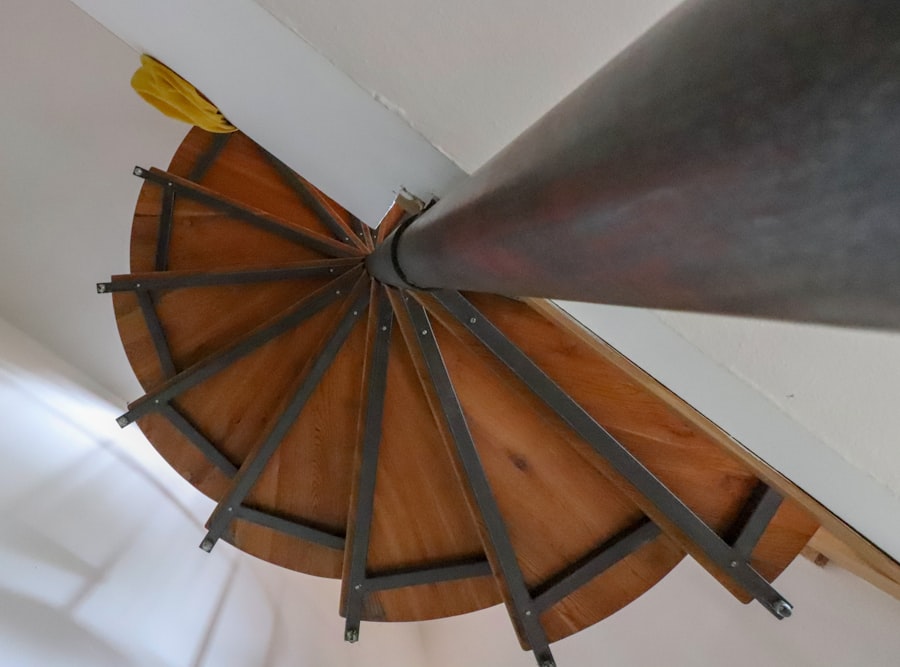The Drake Passage, a body of water situated between the southern tip of South America and Antarctica, is renowned for its tumultuous seas and unpredictable weather. This narrow stretch of ocean, measuring approximately 600 miles in width, serves as a critical maritime route for vessels traveling to and from the Antarctic region. Named after the English explorer Sir Francis Drake, who navigated these waters in the late 16th century, the passage has become synonymous with adventure and peril.
Its unique geographical position not only makes it a vital conduit for marine traffic but also a fascinating subject of study for oceanographers and adventurers alike. The significance of the Drake Passage extends beyond its role as a shipping lane; it is also a vital ecological zone that influences global weather patterns and marine biodiversity. The confluence of the Atlantic and Pacific Oceans creates a dynamic environment that supports a rich array of wildlife, including whales, seals, and seabirds.
For many, crossing the Drake Passage represents a rite of passage, a test of endurance and resilience against nature’s formidable forces. As such, it has captured the imagination of explorers, scientists, and travelers throughout history.
Key Takeaways
- The Drake Passage is a treacherous body of water located between South America’s Cape Horn and the South Shetland Islands of Antarctica.
- Cape Horn holds historical significance as a major milestone for sailors navigating the treacherous waters of the Southern Ocean.
- Navigating the Drake Passage presents numerous challenges, including strong winds, rough seas, and unpredictable weather conditions.
- The weather in the Drake Passage is characterized by strong westerly winds, high waves, and rapidly changing conditions due to the convergence of the Pacific, Atlantic, and Southern oceans.
- Proper preparation, including packing appropriate clothing and gear, is essential for a journey through the Drake Passage to ensure safety and comfort.
Historical significance of Cape Horn
Cape Horn, located at the southernmost point of South America, has long been a pivotal landmark for maritime navigation.
For centuries, sailors have braved the treacherous waters surrounding this rugged promontory, often facing fierce storms and towering waves.
The cape was first rounded by the Dutch explorer Willem Schouten in 1616, marking a significant milestone in maritime exploration. This achievement opened new trade routes and facilitated the exchange of goods between Europe and Asia, forever altering global commerce. The challenges posed by Cape Horn have made it a symbol of maritime bravery and resilience.
Throughout history, countless ships have attempted to navigate its perilous waters, with many meeting tragic fates. The cape’s reputation as a graveyard for ships has led to its portrayal in literature and folklore as a place where only the most skilled sailors dare to venture. The stories of those who have successfully rounded Cape Horn are celebrated as tales of courage and determination, adding to the mystique surrounding this iconic landmark.
Understanding the challenges of navigating the Drake Passage

Navigating the Drake Passage is not for the faint-hearted; it presents a myriad of challenges that test even the most seasoned mariners. The passage is notorious for its rough seas, strong currents, and unpredictable weather patterns. The convergence of the Atlantic and Pacific Oceans creates a volatile environment where waves can reach heights of up to 30 feet or more.
This turbulence is exacerbated by the region’s frequent storms, which can arise with little warning, making it essential for sailors to remain vigilant and prepared for sudden changes in conditions. In addition to the physical challenges posed by the sea itself, navigating the Drake Passage requires a deep understanding of maritime navigation techniques. Sailors must be adept at reading charts, understanding tidal patterns, and utilizing advanced navigational equipment to ensure safe passage.
The combination of natural obstacles and technical demands makes crossing the Drake Passage a formidable undertaking that requires skill, experience, and an unwavering commitment to safety.
Weather patterns and conditions in the Drake Passage
| Month | Average Temperature (°C) | Precipitation (mm) | Wind Speed (km/h) |
|---|---|---|---|
| January | 5 | 80 | 40 |
| February | 4 | 90 | 45 |
| March | 3 | 100 | 50 |
| April | 2 | 110 | 55 |
| May | 1 | 120 | 60 |
The weather patterns in the Drake Passage are notoriously unpredictable, characterized by rapid changes that can occur within hours or even minutes. The region is influenced by various climatic factors, including the Antarctic Circumpolar Current, which flows around Antarctica and contributes to the passage’s turbulent conditions. This current interacts with prevailing winds, creating a complex system that can lead to sudden storms and extreme weather events.
Sailors traversing the Drake Passage must be prepared for a wide range of weather conditions, from calm seas to violent storms. Fog is also common in this area, reducing visibility and complicating navigation efforts. Understanding these weather patterns is crucial for ensuring safe passage through the Drake Passage.
Mariners often rely on advanced meteorological forecasts and satellite technology to monitor conditions and make informed decisions about their routes.
Tips for preparing for a journey through the Drake Passage
Preparation is key for anyone planning to cross the Drake Passage. First and foremost, prospective travelers should ensure they are physically fit and mentally prepared for the challenges ahead. The journey can be physically demanding, with long hours spent at sea and potential bouts of seasickness due to rough waters.
Engaging in physical training prior to departure can help build stamina and resilience. In addition to physical preparation, travelers should equip themselves with appropriate gear and supplies. This includes waterproof clothing, sturdy footwear, and essential safety equipment such as life jackets and emergency beacons.
It is also advisable to pack motion sickness medication to mitigate discomfort during turbulent passages. Familiarizing oneself with emergency procedures and safety protocols is equally important; knowing how to respond in case of an emergency can make all the difference in ensuring a safe journey.
Safety measures and precautions for navigating Cape Horn

Navigating Cape Horn requires meticulous attention to safety measures due to its reputation for treacherous conditions. Mariners must conduct thorough pre-voyage inspections of their vessels to ensure that all equipment is functioning properly. This includes checking navigation systems, communication devices, and safety gear such as lifeboats and flares.
In addition to vessel preparedness, sailors should also develop contingency plans for emergencies.
Regular communication with other vessels in the area can provide valuable information about changing weather patterns and potential hazards.
By prioritizing safety measures and remaining vigilant throughout their journey, sailors can navigate Cape Horn with greater confidence.
Wildlife and natural beauty of the Drake Passage
The Drake Passage is not only known for its challenging navigation but also for its stunning natural beauty and rich biodiversity. The waters are teeming with marine life, making it a prime location for wildlife enthusiasts and nature lovers alike. Whales are often spotted breaching the surface, while seals bask on ice floes nearby.
Various species of seabirds soar overhead, including albatrosses and petrels, which are drawn to the nutrient-rich waters. The dramatic landscapes surrounding the Drake Passage add to its allure. Towering cliffs rise from the sea, while glaciers calve into icy waters below.
The stark contrast between the rugged terrain and vibrant marine life creates a breathtaking tableau that captivates all who venture into this remote region. For many travelers, witnessing this natural beauty firsthand is one of the most rewarding aspects of crossing the Drake Passage.
Famous shipwrecks and maritime disasters in the area
The history of maritime navigation through the Drake Passage is marked by numerous shipwrecks and disasters that serve as cautionary tales for modern sailors. One of the most infamous incidents occurred in 1914 when Ernest Shackleton’s ship, the Endurance, became trapped in pack ice during an expedition to Antarctica. The crew’s harrowing struggle for survival has become legendary, highlighting both the dangers of navigating these waters and the indomitable spirit of human perseverance.
Another notable disaster was the sinking of the passenger liner SS Valencia in 1906 near Cape Beale on Vancouver Island after encountering rough seas during its journey through the passage. The tragedy claimed over 100 lives and remains one of Canada’s deadliest maritime disasters. These stories serve as reminders of the inherent risks associated with navigating such treacherous waters while also underscoring the importance of preparedness and respect for nature’s power.
Modern technology and advancements in navigating the Drake Passage
In recent years, advancements in technology have significantly improved navigation through the Drake Passage. Modern vessels are equipped with sophisticated navigational systems that utilize GPS technology, radar, and sonar to enhance safety and efficiency during crossings. These tools allow sailors to monitor real-time weather conditions, track currents, and identify potential hazards along their routes.
Additionally, satellite communication has revolutionized maritime communication by enabling constant contact between vessels and shore-based support teams. This connectivity allows sailors to receive timely updates on weather patterns and emergency assistance if needed. As technology continues to evolve, it plays an increasingly vital role in ensuring safer navigation through one of the world’s most challenging maritime environments.
The experience of crossing the Drake Passage
For many adventurers, crossing the Drake Passage is an unforgettable experience that combines exhilaration with trepidation. As vessels set sail from Ushuaia, Argentina—the southernmost city in the world—travelers often feel a mix of excitement and anxiety about what lies ahead. The initial days at sea may be marked by rough waters that test their resolve; however, those who persevere are often rewarded with breathtaking views of icebergs glistening in sunlight against a backdrop of towering mountains.
The camaraderie among fellow travelers adds to the experience as they share stories and support one another through moments of discomfort or fear. Many find solace in observing wildlife during their journey—spotting whales breaching or seabirds gliding gracefully overhead serves as a reminder of nature’s beauty amidst adversity. Ultimately, crossing the Drake Passage becomes not just a physical journey but also an emotional one—a testament to human resilience against nature’s formidable forces.
The allure and adventure of Cape Horn’s challenge
The allure of Cape Horn lies not only in its breathtaking landscapes but also in its rich history steeped in adventure and exploration. For centuries, sailors have been drawn to this iconic landmark despite its challenges—each voyage representing an opportunity to test one’s limits against nature’s might. The stories etched into its waters serve as reminders that while danger lurks beneath turbulent waves, so too does beauty await those brave enough to venture forth.
As modern technology continues to enhance safety measures for navigating these treacherous waters, Cape Horn remains an enduring symbol of adventure—a place where dreams are forged amidst trials at sea. For those who dare to cross its path, it offers an unparalleled experience that transcends mere travel; it becomes a journey into self-discovery amid nature’s grandeur—a true testament to humanity’s spirit of exploration.
The Drake Passage and Cape Horn are renowned for their treacherous waters and challenging navigation conditions, making them significant landmarks in maritime history. For those interested in exploring more about these fascinating locations, an article on MyGeoQuest provides an in-depth look at the geographical and historical significance of these areas. You can read more about it by visiting this related article on MyGeoQuest.
WATCH NOW! Drake Passage: Earth’s Deadliest Waters Revealed
FAQs
What is the Drake Passage?
The Drake Passage is the body of water between the southern tip of South America at Cape Horn and the South Shetland Islands of Antarctica. It connects the southwestern part of the Atlantic Ocean with the southeastern part of the Pacific Ocean.
What is Cape Horn?
Cape Horn is the southernmost headland of the Tierra del Fuego archipelago of southern Chile. It is widely considered the southernmost point of South America and marks the northern boundary of the Drake Passage.
Why is the Drake Passage significant?
The Drake Passage is known for its notoriously rough and unpredictable seas, making it one of the most challenging and dangerous maritime routes in the world. It is also a key location for the mixing of the cold Antarctic waters with the warmer waters of the Atlantic and Pacific Oceans, which has a significant impact on global ocean circulation and climate.
What is the weather like in the Drake Passage and Cape Horn?
The weather in the Drake Passage and Cape Horn is characterized by strong winds, high waves, and rapidly changing conditions. The area is known for its stormy and unpredictable weather, with frequent gale-force winds and rough seas.
What is the significance of the Drake Passage and Cape Horn for maritime history?
The Drake Passage and Cape Horn have been historically significant for maritime exploration and trade routes. Many early explorers and sailors sought to navigate these treacherous waters in their quest to circumnavigate the globe, and the area has been the site of numerous shipwrecks and maritime disasters. Today, the passage remains an important route for ships traveling between the Atlantic and Pacific Oceans.
